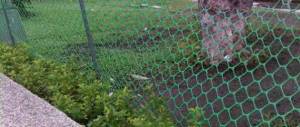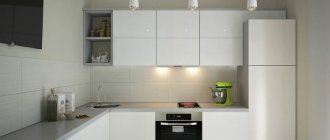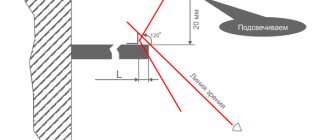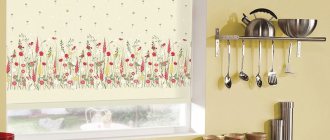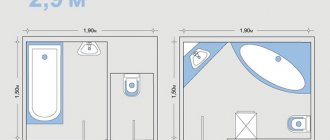Proper beds are a relatively new trend, which is strongly recommended for use in arranging even a small area. It is believed that even from a small plot of land, if you make garden beds correctly, you can get a significantly larger harvest.
Variety of options
In the technology of the newfangled trend, there are many rational thoughts borrowed from the centuries-old experience of folk agricultural technology. It involves careful consideration of the location of sunlight, protection from natural conditions and conservation of water.
Mel Bartholomew's beds - pros and cons
The “square foot garden” principle is based on dividing the bed into squares. This delimitation of space is an easy way to create a small but high-yielding and compact vegetable garden. Everything looks beautiful and structured on it.
Pros:
- there are no paths or wide row spacing that require constant weeding;
- when it is still necessary, weeding is much easier;
- there is no empty land;
- the soil is always loose, because no one walks on it, which means no one tramples it;
- square foot warmer than a regular bed;
- significantly lower seed consumption.
The idea will definitely appeal to those who love smooth lawns, but at the same time would not mind picking a cucumber or tomato from their own garden bed. This is a practice for beginners who are just taking their first steps in gardening. And, of course, a solution for those who are limited by the size of the plot, but do not want to be left without fresh vegetables within walking distance.
Minuses:
- beds divided into squares are not for those who like to make preparations. The harvest is high, but its scale is not the same;
- The method is not acceptable for all cultures.
DIY garden beds
Fertile and beautiful garden beds at the dacha give joy to both the eyes and the stomach. They can be of different shapes and heights. The main thing is, of course, the soil. In modern gardening, there are two different ways of cultivating the land:
- Traditional - constant regulation of soil conditions by humans, deep loosening and digging, excessive fertilization.
- Ecological - minimal human intervention in natural changes in soil conditions.
The traditional method has two significant disadvantages. Firstly, it requires a lot of work. Endless weeding, digging, treatment with various chemicals - all this takes a lot of time and effort. Secondly, this method is traumatic for the soil, because it does not have time to fully recover between digging procedures. As a result, even with regular use of fertilizers, the harvest in such beds is much poorer than it could be.
The ecological approach is based primarily on the earth's ability to regenerate itself, in contrast to the traditional one. To do this, she just needs to stay out of the way. Instead of deep digging, you can simply loosen superficially, and replace constant weeding with regular mulching. With this approach, the soil structure develops in the most natural way with the help of various insects and microorganisms. In such organic beds, which are also called smart, plants receive all the necessary substances without the use of special fertilizers and produce a rich harvest. Currently, it is the environmental approach that is most popular.
Smart beds for high yields
Creating smart beds with your own hands requires very little time and effort. This must be done in several stages.
- Choosing a place for beds. The only factor that needs to be taken into account is the presence of sun. The duration of daylight on the site should be at least 5-6 hours a day. Otherwise, the place can be anything, even a completely trampled wasteland will do.
- Site preparation. This won't take much time either. It is enough to remove all debris and weeds from it. Moreover, attention should be paid only to perennials, and it is not necessary to remove grass and annuals. You can dig up the ground once to make it easier to deal with weeds. There is no need to do any digging afterwards.
- Next, you need to decide how to arrange the garden: plan the plot, mark the location of future beds.
- Install the edges of the beds in the marked places. They can be of various shapes and heights.
- Next, we begin to create a place of residence for future plants in the beds. As the first layer, we use various materials that do not retain water: wood chips, straw, shavings, tree bark, dry leaves or algae. The layer thickness should be about 10 cm.
- The second layer is fertilizer, which can be used as compost, rotted manure or bird droppings mixed with straw. If the planted crops need mineral fertilizers, then they also need to be added to this layer.
- Next, you again need to lay a permeable layer, and fertilizer on it, and repeat this order a couple more times.
- Then lay the top layer - high quality garden soil. The thickness of this layer is also about 10 cm.
- Upon completion of this work, the beds must be properly watered. They should then sit quietly for several days. During this time, they will be well saturated with water and will settle slightly.
- After this period ends, plants can be planted. After planting, they should also be well watered and then mulched. The mulching procedure is necessary for long-term moisture retention and also prevents the appearance of weeds.
- If you do not plan to plant plants immediately, then the prepared and water-soaked beds can simply be covered with film, securing it along the edges. In this form, they can calmly wait even all winter until the onset of spring.
- Periodically, the soil level in smart beds will become lower. This shrinkage usually occurs around the time of harvest. To replenish organic matter, simply leave any greens that cannot be harvested in the beds and add a new layer of garden soil on top. For the winter, this blank must be covered with film.
DIY strawberry beds and their types
Such super-beds allow you to get a very rich harvest, while the cost of time and effort is kept to a minimum. This is the most reliable way to make growing vegetables in the garden convenient and effective.
Different "squares" by Mel Bartholomew
We have repeated the word “squares” so often that it may seem that there is no other choice. In fact, this is only a general principle. The shape can be not only purely square, but also rectangular and even round!
The main rule of the bed according to Mel Bartholomew: a square foot inside is a constant - 30x30 cm. Next, the squares are combined into blocks measuring 4x4, and a structure of 1.2x1.2 m is obtained. In total there are 16 squares, in which, according to Mel's method requires planting 1, 4, 9 or 16 plants.
To build a bed you will need antiseptic-treated boards and timber, screws and slats or ropes with which you will divide the bed into squares. Each square is an independent bed for one crop.
If you decide to assemble the structure in the garden, you can do it right on the ground. The bed will be filled with a nutrient mixture that will suit any soil. If construction takes place on a lawn or sidewalk, you will need a bottom, for example, made of geotextile or dense spunbond.
Common types
In addition to filling the beds, their appearance also plays an important role. This is not so much about decorativeness, but about the benefits for plants. There are several most common types of comfortable beds.
The classic and most famous look. From the name it is clear that these beds are slightly raised above ground level. As a rule, their height is 10-20 cm. The shape is absolutely any. The presence of sides is not mandatory, although with them, of course, everything looks neater. The disadvantage of such beds is that they are not very convenient to work with. For surface loosening and weeding, you have to bend low, this puts a lot of stress on your back.
This type differs from the raised ones just in height. Growing vegetables in high beds makes the garden not a chore, but a completely pleasant place. An important factor is that such structures guarantee high-quality drainage. Therefore, their use is very important in swampy and rainy places.
The height of such a bed varies between 30-80 cm. Of course, the higher the structure, the more convenient it is to work with it, because you can hardly bend down. The construction of this panacea does not require too much work; it occurs in several stages.
- The first step is to make a box in which the soil and plants will be placed. It can be made from any material; bricks, stones, metal and plastic plates, and wooden boards are suitable. Of course, the stronger and more resistant to water and air the material, the longer it will last.
- After the box is in place, you need to put a fine metal mesh on the bottom, which will prevent rodents. You also need to place geotextiles there to prevent the germination of weeds.
- Next you need to lay a drainage layer. This is necessary in order to avoid moisture stagnation. The layer height should be 10 cm or more. The best materials for drainage are expanded clay, crushed stone, and brick fragments.
- High-quality garden soil is laid on top of the drainage layer. To exclude the presence of various larvae and weeds in it, you must first thoroughly sift the soil and saturate it with a manganese solution. But you can take a simpler route by purchasing the soil in a specialized store. As a rule, such soil has already gone through all the necessary processing procedures. You need to fill the box with soil almost completely, leaving 3-4 cm free to the top edge.
- The box can also be filled according to the principle of creating smart beds, which were described above. Organic soil will produce higher and better yields.
Warm beds
This is a kind of alternative to a greenhouse; it helps to get a very early harvest. The construction of a warm bed is not too different from a high one. A box about 50 cm high is also made, with a metal mesh placed at the bottom. Then the soil is laid in layers.
- The first layer consists of sawdust, which is first doused with boiling water and a manganese solution. If the soil on your site consists of clay, then you can replace the sawdust with pieces of wood, thereby creating good drainage. The thickness of the first layer is 15 cm or more.
- The second layer consists of organic matter: fallen leaves mixed with manure or bird excrement. The thickness of this layer is also 15 cm.
- The third layer is also organic, but quickly rotting. Grass or compost can serve this role well. The layer thickness is 10 cm or more.
- The fourth layer is the last and consists directly of fertile soil. To do this, you need to mix 6 parts of high quality garden soil, 1 part sawdust treated against parasites with boiling water and potassium permanganate, and 1 part sand. Add the required amount of mineral fertilizers to this mixture and pour it into the box. The thickness of this layer is 20 cm.
We invite you to familiarize yourself with the drooping birch in landscape design
Important: you need to pour a little sand on top of each layer.
The principle of operation of a warm bed is that layers of organic matter quickly decompose, releasing heat. Thus, they give plants the opportunity to develop quickly and well. The only disadvantage of such a device is its service life, which is only 4 years.
French sectors
This is one of the most beautiful ways to design a vegetable garden. French beds can be either raised or flush with the ground. The essence of this decor is to highlight an area of a certain geometric shape, which is then divided into identical sectors-beds:
- Square - can be divided into small squares, rectangles or rhombuses; in the classic version it is divided into four identical square sectors.
- The circle is one of the most elegant options, usually divided into triangular sectors, the top of each of which is directed towards the middle of the circle, while some decorative element is placed in its center: a statue, a fountain, a large pot with bright flowers.
These are the two most popular forms, but the options are not limited to them, it all depends on your imagination. You can make a French section in the form of a zigzag, triangle, semicircle or some other shape.
Each sector is fenced with a border. As a rule, the fence is made of wood, wrought iron bars or beautiful stones. A living border made with the help of specially planted plants looks especially chic. Paths between sectors also need to be decorated with beautiful tiles, stones or gravel. In this case, the coating should be visually combined with the curbs.
French beds are suitable for growing both flowers and vegetables. The main thing is to make sure that all planted crops look harmonious in combination with each other. The whole essence of such a site is grace, beauty and harmony.
Soil for a “smart” garden bed
Sharing his experience with the general public for the first time, Mel Bartholomew suggested filling garden beds with garden soil enriched with compost. But he later called for the abandonment of garden soil due to the presence of pests and weed seeds in favor of a soil mixture of compost, vermiculite and peat. Such a purchased set is not a cheap pleasure, so only a few gardeners will allow themselves to completely exclude soil.
As you rotate crops, maintain soil fertility in your square garden by adding compost after each cycle. Mulch the space between plants again with compost or other organic materials. Give plants liquid fertilizers made from compost or herbal infusions.
In severe winters, some perennial crops (for example, strawberries) in square beds may freeze.
What to Sow in Square Feet
Before moving in the “tenants”, i.e. To start sowing seeds or planting seedlings in squares, draw a diagram of the bed with crops on paper.
- follow the principle: one cell – one culture;
- taller plants - on the north side;
- For climbing crops, give space along the edges, providing them with vertical support.
When placing different crops nearby, take into account the time of their active growth and maturation. During the summer, replace some ripe vegetables with others. Once you have collected leaf lettuce, plant dill, onions, watercress, arugula, and radishes instead.
Let's say you have lettuce and cucumbers nearby. Great! When lettuce leaves gain strength, cucumbers are still small. Conversely, when the cucumbers grow, it will be time to cut the lettuce leaves. That is, they do not interfere with each other.
Plant flowers in one or more “hundred” beds that will attract pollinating insects.
The essence of Mel Bartholomew's method is that he recommends planting the exact number of plants in one square. Giant plants in Mel’s coordinate system occupy 2 squares at once.
Bad decisions
When describing the plan for the future garden, unfortunately, it is impossible to take into account absolutely everything. Especially if plans change frequently. However, you should try to avoid common mistakes that can lead to adverse consequences:
- Planting trees in the center or on the south side of the garden. They will provide a lot of shade, and it will no longer be possible to plant many garden crops around them. When purchasing a seedling, it is important to clarify the size of an adult tree, taking into account the crown.
- Purchasing self-sterile fruit trees for a small plot. In this case, it is necessary to take into account that to obtain fruits you will need to plant not one, but two or three seedlings. If the available land is not too large, then the garden will take up a lot of space.
- Installation of a garage in the depths of the site. A road will be required to get to the garage, which will take up most of the valuable territory.
- Heap growing of crops. It is best to differentiate plants (especially if they do not get along well together). The same cultures have the same diseases. Therefore, if, for example, tomatoes are infected, nearby potatoes will become susceptible to the disease. For the same reason, currant and gooseberry bushes are not planted nearby.
- Too many plants in the area. In pursuit of a rich harvest, gardeners try to plant as many different crops as possible. This in most cases leads to the opposite effect. Plants planted too close will begin to compete with each other and end up growing weak. Therefore, you need to adhere to the rules for planting seedlings and seedlings and maintain the proper distance between them to avoid crop failure.
Related article:
How to properly prepare soil for seedlings
Watering Mel Bartholomew's garden bed
An obvious plus is that watering a compact garden requires much less water than a regular one. And it’s easier to monitor whether hydration is needed, because everything is literally at hand. Add to this the time savings - watering a standard 4x4 unit takes about 5 minutes.
Do I need any special device for watering? After all, the bed is unusual? There is no such need; a standard bucket of warm, settled water and a mug are enough. And this is very good, because during the watering process you will inspect each plant: are insect pests or diseases bothering it? Retain moisture in the soil using the same means as in a large garden - cover with black spunbond, mulch with compost or mowed lawn grass.
Square Foot and Crop Rotation in Miniature
The square foot may be compact, but no one has canceled crop rotation on it, as on a large plot. The vacated square can be sown, guided by the basic rule of changing plants - do not grow the same crop in the same place from year to year.
The good thing about having squares is that there are a lot of them, which means that the likelihood that the same plant will end up where it already was is small in itself. Complement this principle by knowing what to plant for what. Do not place representatives of the same family next to each other in a square, because... and their pests are the same. For example, follow the dill with carrots. But carrots can be planted behind tomatoes; they are not just “foreign”, but also need different nutrients. Refresh your knowledge of crop rotation by reading the article “Crop rotation, or What to plant next in the garden.”
Square Foot: Good and Bad Neighbors
In the natural environment, some plants either help or hinder the growth of others. The same thing happens in the garden. The contents of the plant compatibility table will help you understand how plants get along side by side. Read about what relationships may arise between other neighbors in the article “Mixed plantings: choosing the best neighbors for plants.”
Finally, one more argument from Mel Bartholomew in favor of the square foot. He suggests placing such beds in the most visible areas of the garden, and not in the backyard. An engineer and gardener, it turns out, is also a psychologist! In his opinion, who would want to “admire” empty cells or an abandoned garden bed? The legs themselves will carry the owner there to put everything in order.
General principles of creation
There are several general rules on how to properly make garden beds.
- When planning a garden, you need to take into account the cardinal directions. The southern side of the site should be reserved for plants that love warmth: tomatoes, eggplants and similar vegetables. But various greens will grow better in the northern part.
- To place beds, regardless of their shape, it is better to choose a flat area. Otherwise, the water will not have time to be properly absorbed into the ground; it will simply flow towards the slope.
- The size of the beds should be such that you can reach their center. The optimal width of the beds is 45 cm, and the paths between them are about a meter. This option is not the most economical in terms of space, but it allows you to carry out all garden work with maximum convenience.
- Borders play not only a decorative role, but also prevent the appearance and growth of weeds. Therefore, it is still better to install fences.
Following these principles will allow you to make your garden productive and beautiful.
